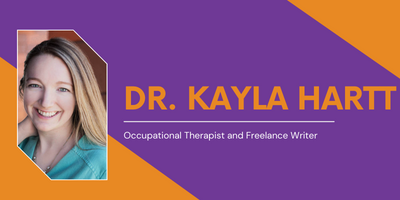Special education teachers have many responsibilities from providing special education services to advocating for students to adapting to changes that leave them prone to stress or exhaustion. Compounding these responsibilities with a pandemic is a recipe for burnout, which is prolonged stress, physical tiredness, and emotional fatigue.
The COVID-19 pandemic added several stressors to the many tasks of a special education teacher, including COVID-19-related anxiety, anxiety about teaching demands, parent communication, and administrative support (Pressley, 2021). Burnout amongst special education teachers is also higher than their general education counterparts (Hemati Alamdarloo, G., & Moradi, S., 2021).
Burnout leads to physiological and mental symptoms including, fatigue, concentration deficits, anxiety, depression, sleep disorders, heart disease, and more. Sadly, burnout amongst special education teachers is reflected in student progress. Teachers who can maintain their health and well-being use better practices, resulting in increased student outcomes (Oberle & Schonert-Reichl, 2016).
Identify Your Risk factors
Burnout amongst special education teachers does not look the same for everyone. It is essential to elucidate the factors jeopardizing positive mental health and overall well-being, including:

- Reduced feelings of accomplishment at work
- Feeling overwhelmed by tasks or like you aren’t in control
- Physical symptoms of feeling tired, having aches and pains, or being unable to sleep
- Imposter syndrome or other feelings of inadequacy
- Loss of motivation or sense detached
- Increased drug or alcohol intake
How can we deliver these vital services when burnout amongst special education teachers is so high? Below are several steps to get started. Begin by selecting one or two areas to focus on and master them.
Reflect and Regulate
Start from within by recognizing your behaviors and thoughts. Recognize exactly what it is that sends your thoughts spiraling. Don’t judge yourself. Focus on your breath to bring you back into the present moment. Meditation has been around for thousands of years for a reason (and now we have the evidence base to back it up!) Problem-solving comes more naturally when you are coming from a calm, non-judgmental space. If you want to go further, check out guided meditations or cultivate your practice.
Communicate
Communication is a proactive strategy that can lessen burnout amongst special education teachers. Use resources provided by your employer, whether that includes formal or informal mentorship or team meetings. Ask for help. Many of your colleagues have likely experienced similar challenges and can offer their own experiences or resources that helped.
Manage your time
While you’ll still have plenty to do in a day, organizing your time can give you a sense of control over your day. To make the most out of your time:
- Prioritize what you need to do first. Designate time accordingly.
- Create a schedule. It is OK to pick either a planner or electronic. Just be sure to keep it all in one place.
- Chunk similar tasks (e-mail correspondence or using the printer).
- Get insight into how what you do in a day by tracking time spent on each task. Adjust your schedule as needed.
- Recognize when your plate is full and be comfortable saying ‘no’ to optional extracurriculars.
MindWorks Collaborative would love to invite you to learn more about burnout among special education teachers. Join future conversations on this topic by signing up for our community of justice-driven special educators here and sign up to get alerts for our next roundtable.



Recent Comments